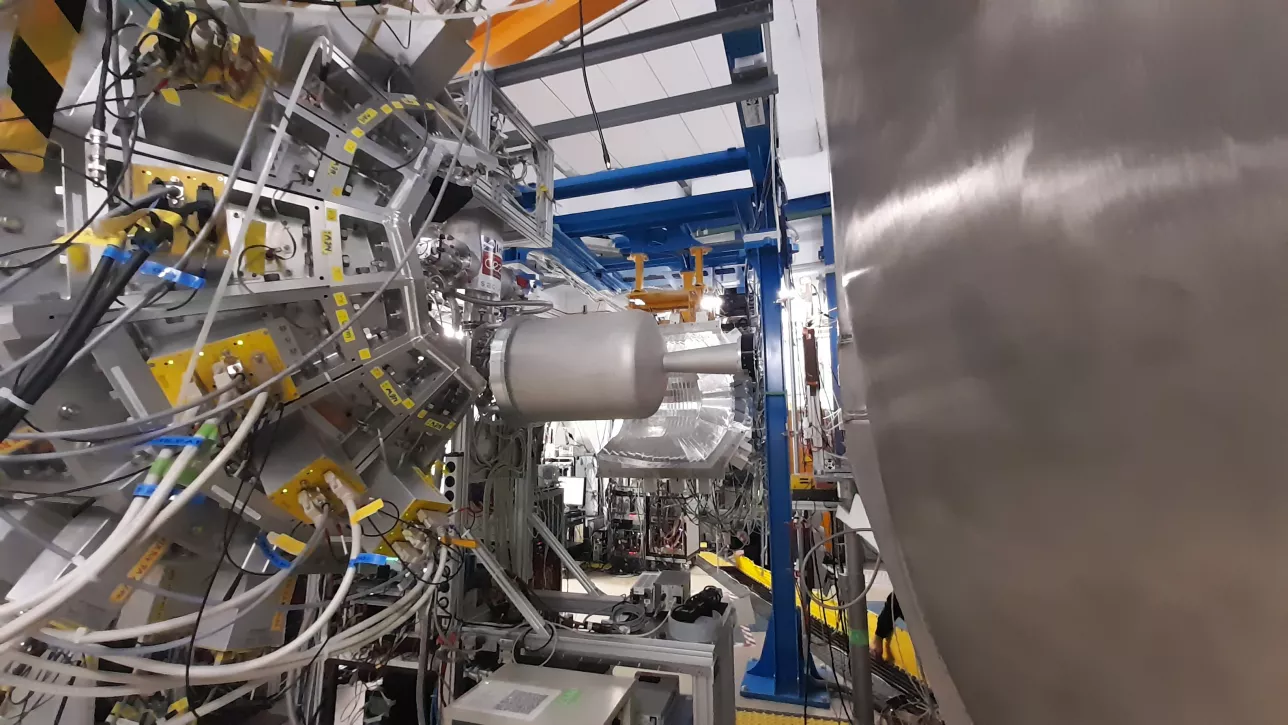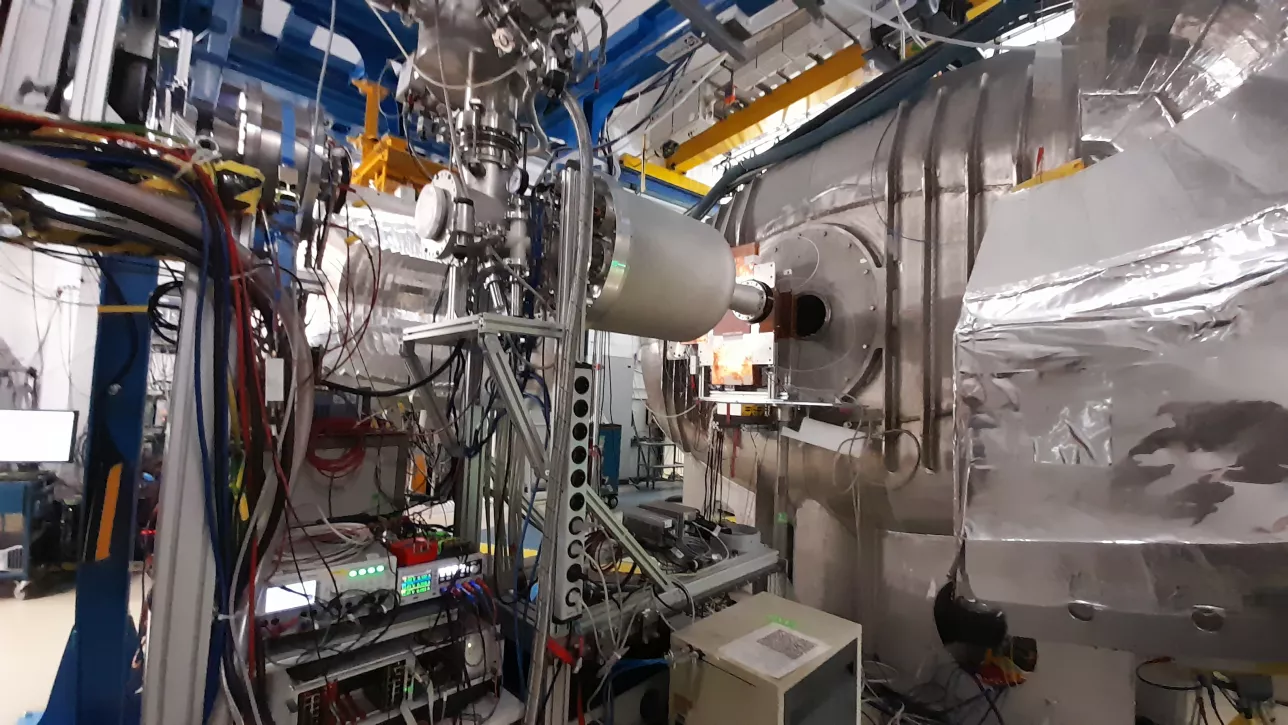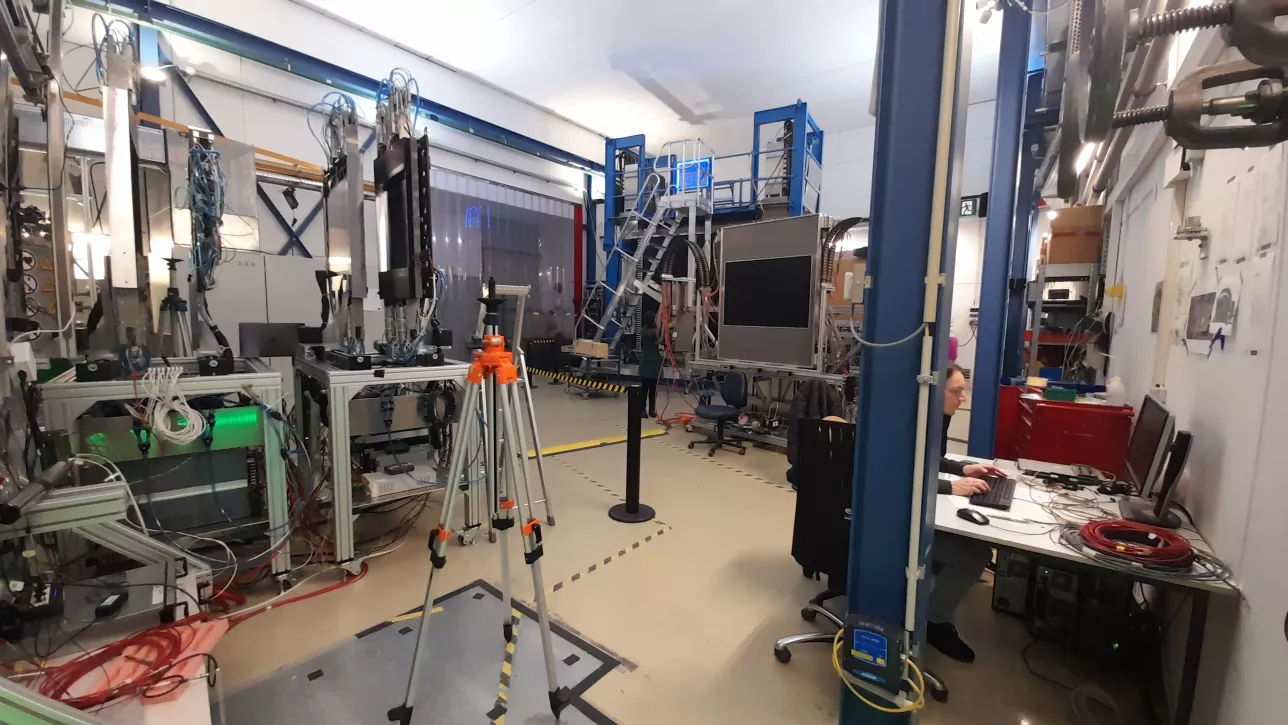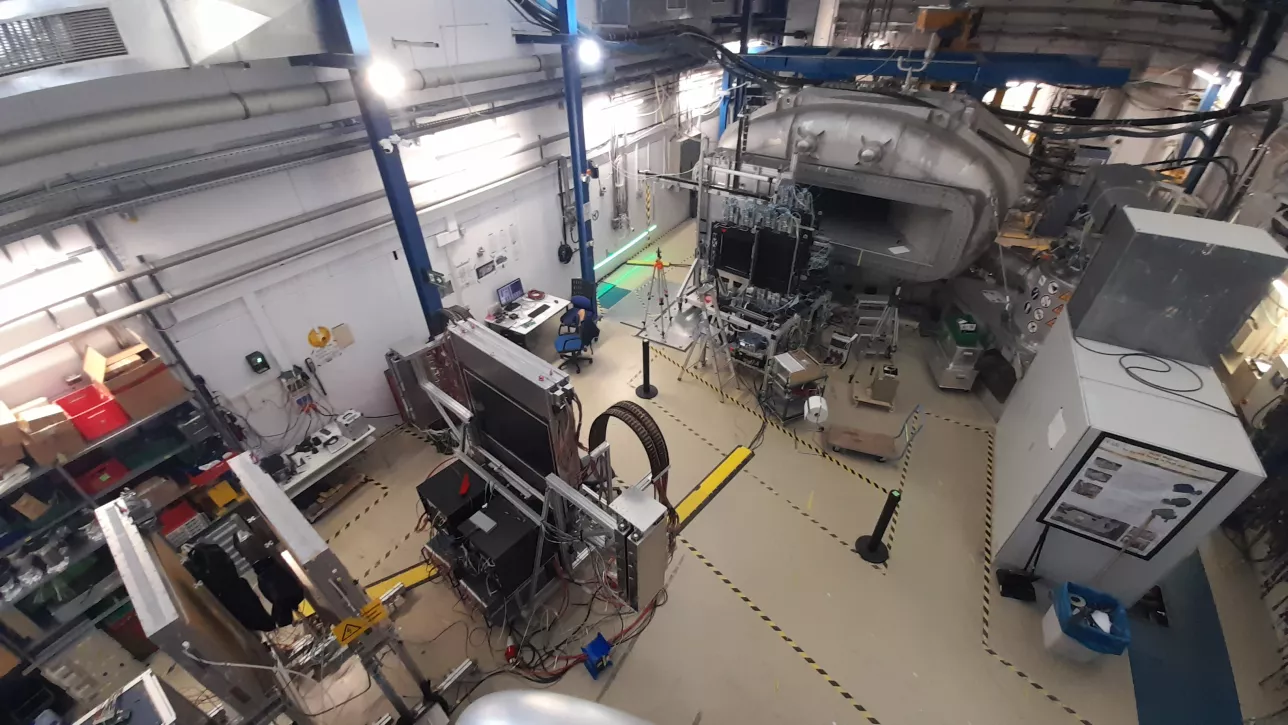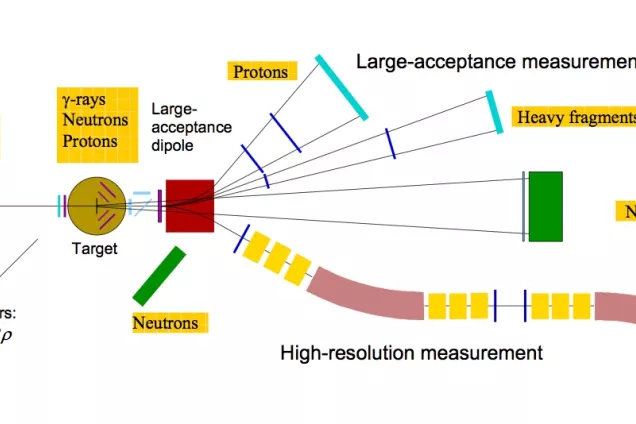The R3B experiment at FAIR
The Reactions with Relativistic Radioactive Beams (R3B) experiment at FAIR focuses on kinematically complete measurements, primarily involving atomic nuclei far from stability, using relativistic beams. The Facility for Anti-proton and Ion Research (FAIR), which R3B is part of, is a new convention bound international accelerator facility where Sweden is a share holder and a founder member.
The R3B experiment will from ~2026 be located at the new Super Fragment Separator (Super-FRS) of FAIR, but we are already active with the R3B experiment in the FAIR phase-0 program at the GSI Fragment Separator (FRS) preparing the for the completion of the high-energy radioactive-beam branch of FAIR.
The experiment focuses on kinematically complete measurements using high-energy exotic beams. This method makes it possible, e.g., to knock-out individual nucleons from the nucleus in quasi-elastic scattering. In this way hole-states can be created in unstable nuclei by removing nucleons below the Fermi surface, and the gamma-ray emission that follows, as the new nucleus relaxes to its ground state, can be observed in coincidence.
The experiment relies on the fragmentation method were a heavy ion beam at high velocity impinges on a low-mass target producing a multitude of fragments in the process. The speed of the beam makes it possible to address atomic nuclei with very short half lives, i.e. nuclear systems very far from stability, as the transport time from the primary target to the secondary target can be kept very short. The fragments under study are selected by tracing their paths through the separator where magnetic fields bend the paths of the fragments according to their mass-to-charge ratio, and by measuring their flight time and energy loss.
One of the characteristics of this process is that many different fragments, with different masses and momenta, are created when the primary beam hits the fragmentation target. It is therefore necessary to track each individual fragment from its creation till the secondary target has been hit, together with its reaction products after the reaction has occurred.
The experiment includes many different types of detectors to measure flight times, energy loss, and the type and direction of the reaction products. One can summarize this as beam position detectors and tracking detectors that determine the paths of the fragments and the reaction products, where the products oftentimes consist of a beam like fragment and light charged particles and neutrons, and detectors that measure their energies.
A main feature of the experiment includes a liquid hydrogen target situated in the target chamber where it is surrounded by Si-detectors with high-spatial resolution. A CsI(Tl) based calorimeter provides a second layer of detectors around the target. Additional detectors for registering forward going products before they enter a wide-angle SC dipole magnet can also be used. Similarly tracking detectors situated after the magnet detect charged reaction products emitted in the very forward angles, and a multi-layer large-scale neutron wall detector detects neutrons, and measures their energies via time-of flight.
Our main contribution to the instrumentation has been directed to the calorimeter where we have a dedicated detector laboratory in Lund to test and assemble detector elements. This instrumentation is part of the Swedish in-kind contribution to FAIR.
The research program at R3B covers a wide range of topics from nuclear astrophysics, to fission, nucleon-nucleon correlations and reaction mechanisms. As mentioned above, a specific topic of interest is knock-out of single nucleons or correlated pairs of nucleons from the nucleus. The setup is esp. well suited for such studies as it allows to identify one-nucleon knock-out by measuring the spatial signature of such events at the same time as it also can measure energies of the reaction products and identify their types.
The latest campaigns that have taken full use of the capabilities of the setup have focussed on short-range correlations in the nucleus. In this case one is interested in seeing to what extent nucleons have a tendency to form pairs with the same type of nucleon, nn or pp pairs, or if np pairs also form, and if so to what extent. In this case another feature of the setup is also of help, i.e. the possibility to identify the type of light-charged particle that is emitted with the help of pulse-shape analysis of the signals from the CsI(Tl) crystals in the calorimeter.
More information about FAIR and R3B can be found by following the links on the right hand side of the page. The pictures show the experiment during the setup phase for the 2024 experimental campaign.
